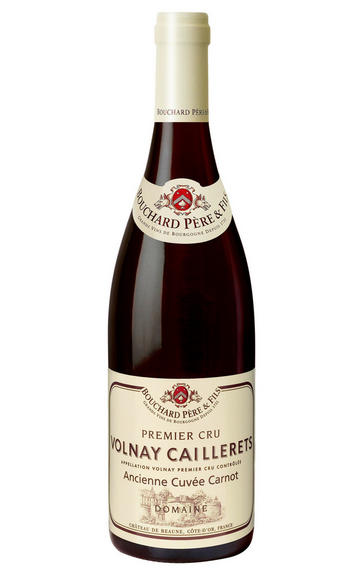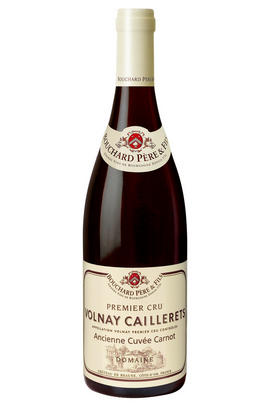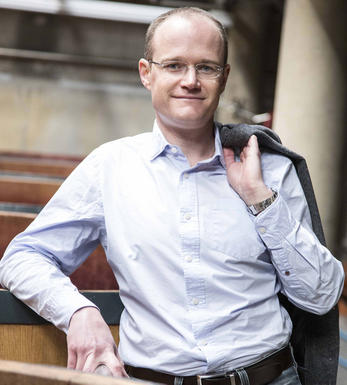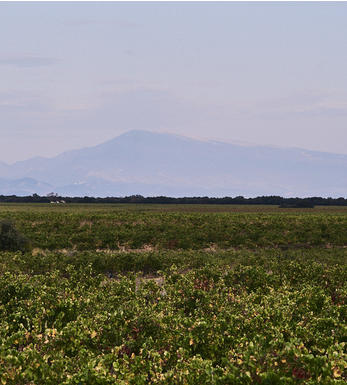
2016 Volnay, Caillerets, Ancienne Cuvée Carnot, 1er Cru, Domaine BouchardPère & Fils, Burgundy

Critics reviews
William Kelley - 04/01/2019
About this WINE

Bouchard Pere et Fils
The Burgundian wine domaine of Bouchard Pére et Fils can trace its origins back to 1731 though it is no longer family owned. In 1995 the Champagne house, Joseph Henriot, acquired the company and quality has risen as a consequence.
Today Bouchard is led by Stéphane Follin Arbelet while the wines are made by Philippe Prost who has been with the company since 1978. An impressive gravity-flow winery on the Route de Savigny, the Cuvérie St Vincent, was completed in 2005, enabling them, to process all their wines with optimum efficiency.
Bouchard’s total holdings comprise 130 hectares, including 12ha of grand crus and 74ha of premier crus, which makes them the largest vineyard owners in the Côte d’Or (Côte de Nuits and Côte de Beaune).
Bouchard have good holdings in the village of Monthélie, which lies just beyond Volnay and looks down over Meursault. The village is best known for its red wines, a little firmer in structure than Volnay and of particular interest in perfect summers when the grapes can ripen fully.

Volnay
The finest and most elegant red wines of the Côte de Beaune are grown in Volnay, a village which might be twinned with Chambolle- Musigny in the Côte de Nuits, for the high active chalk content in the soil and comparatively low clay content.
Whereas in earlier times Volnay was made in a particularly light, early drinking style, these days there are many producers making wines which age extremely well. The best vineyards run either side of the RN73 trunk road.- 98 hectares of village Volnay
- 115 hectares of Premier Cru vineyards (35 in all). The finest include Les Taillepieds, Clos des Chênes, Champans, Caillerets (including Clos des 60 Ouvrées) and Santenots in Meursault.
- Recommended producers: Lafarge, Lafon, de Montille

Pinot Noir
Pinot Noir is probably the most frustrating, and at times infuriating, wine grape in the world. However when it is successful, it can produce some of the most sublime wines known to man. This thin-skinned grape which grows in small, tight bunches performs well on well-drained, deepish limestone based subsoils as are found on Burgundy's Côte d'Or.
Pinot Noir is more susceptible than other varieties to over cropping - concentration and varietal character disappear rapidly if yields are excessive and yields as little as 25hl/ha are the norm for some climats of the Côte d`Or.
Because of the thinness of the skins, Pinot Noir wines are lighter in colour, body and tannins. However the best wines have grip, complexity and an intensity of fruit seldom found in wine from other grapes. Young Pinot Noir can smell almost sweet, redolent with freshly crushed raspberries, cherries and redcurrants. When mature, the best wines develop a sensuous, silky mouth feel with the fruit flavours deepening and gamey "sous-bois" nuances emerging.
The best examples are still found in Burgundy, although Pinot Noir`s key role in Champagne should not be forgotten. It is grown throughout the world with notable success in the Carneros and Russian River Valley districts of California, and the Martinborough and Central Otago regions of New Zealand.


Buying options
Add to wishlist
Description
This was bought by Bouchard in 1775 from the Famille Carnot and at the time of Dr Lavalle, when it was held as a Tête de Cuvée. The colour is especially dense and the nose presents with deep plum notes, perhaps with a bit of surmaturité . This has a lot of concentration and extract and so it is surprising to find it was harvested on 21st September, the first day of the vintage. That speaks highly of the terroir . The texture is almost Vosne in style. Drink 2020-2025.
Adam Bruntlett, Burgundy Buyer
Bouchard Père & Fils can trace its origins back to 1731 though it is no longer family- owned. In 1995 Champagne entrepreneur, Joseph Henriot, acquired the company. The wines are made by technical director Frédéric Weber in succession to Philippe Prost. An impressive gravity-flow winery on the Route de Savigny, the Cuverie St Vincent, was completed in 2005, enabling them to process all their wines with optimum efficiency. Bouchard’s total holdings comprise 130 hectares, including 12 hectares of Grand Cru and 74 hectares of Premier Cru, which makes them the largest vineyard owners in the Côte d’Or. Philippe Prost had an individual take on the vintage. His view is that the high levels of rainfall at the start of the year (themselves contributory to the frost damage) saturated the soil to such a degree that high levels of minerals were unlocked and subsequently taken up by the vines. It is useful to get the view of a producer who covers the whole region. He also observed that there were much smaller berries in the Côte de Beaune than the Côte de Nuits and that, on the whole, Chardonnay and Pinot Noir were picked at almost the same time. He also offered a thought on bâtonnage: Bouchard prefers to roll their barrels to move the lees, and not to open the bung and stir. This preserves the CO2 in the wine which means less SO2 is necessary.
wine at a glance
Delivery and quality guarantee